These weapons, often unknown to the public, were widely used in combat, in the Poland-Hungary zone, and also in the rest of the area under Germanic influence.
During a melee between two cavalry corps, they proved much more practical than swords, allowing a very rapid resumption of the blow when the enemy had been missed by a first movement.
Our example, due to the shape of its head, is typically Polish.
Head of the hammer: on one side it has a faceted peak, intended to slide into the joints of the armor, and on the other a spherical part also faceted, very effective on smooth parts of the armor .
Suspension hook: it is attached directly to the handle of the hammer, and soberly decorated with a Saint Andrew's cross.
Stick of the hammer: it begins at the level of the first third near the hilt by a square section, decorated with a cross of Saint Andrew, then the stick becomes twisted and fluted, to finally take a cylindrical section up to the head of the hammer .
Hilt: It is cylindrical, made of oxidized iron, which probably originally had to be covered with leather.
The hand is protected by a circular iron guard, and the grip ends opposite with another iron washer, to which the bottom of the handle is riveted. This riveting represents, again, a Saint Andrew's cross.
Beautiful, unusual object, full of history.
France = Free shipping charges, Western Europe=30€,
Ref E-2322



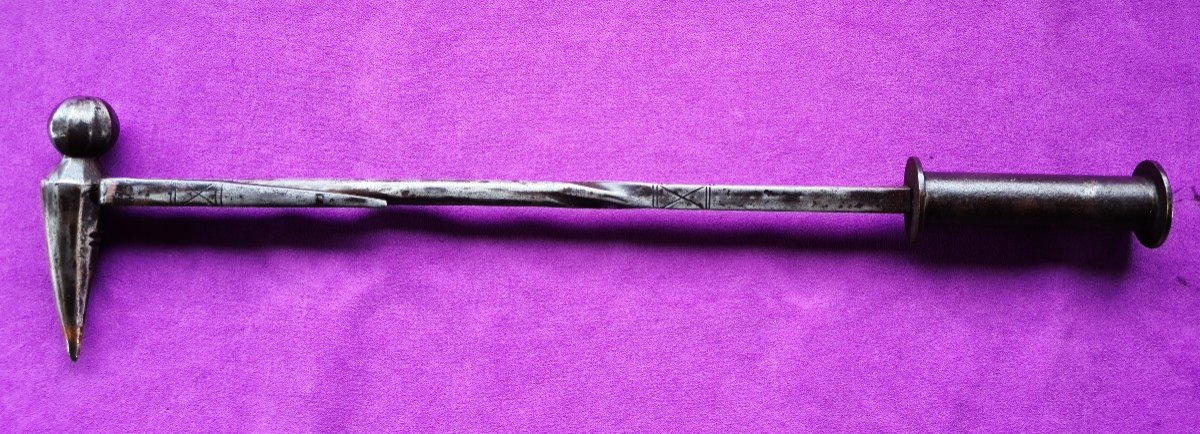
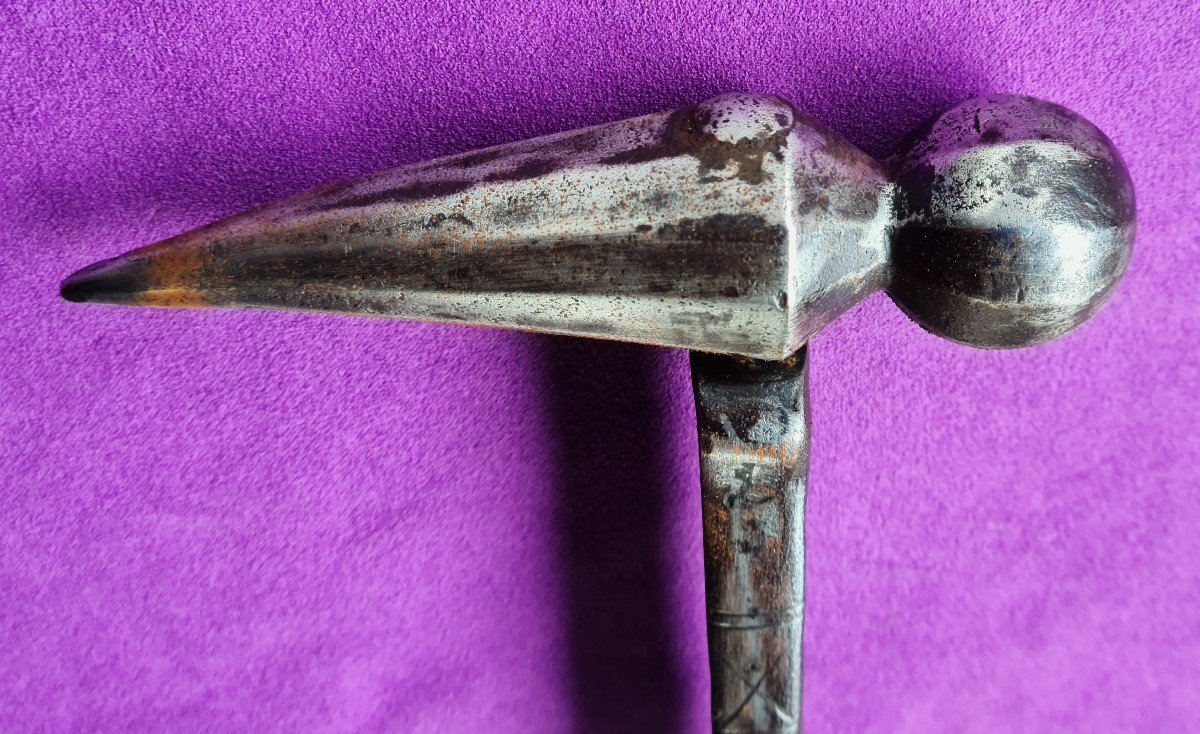
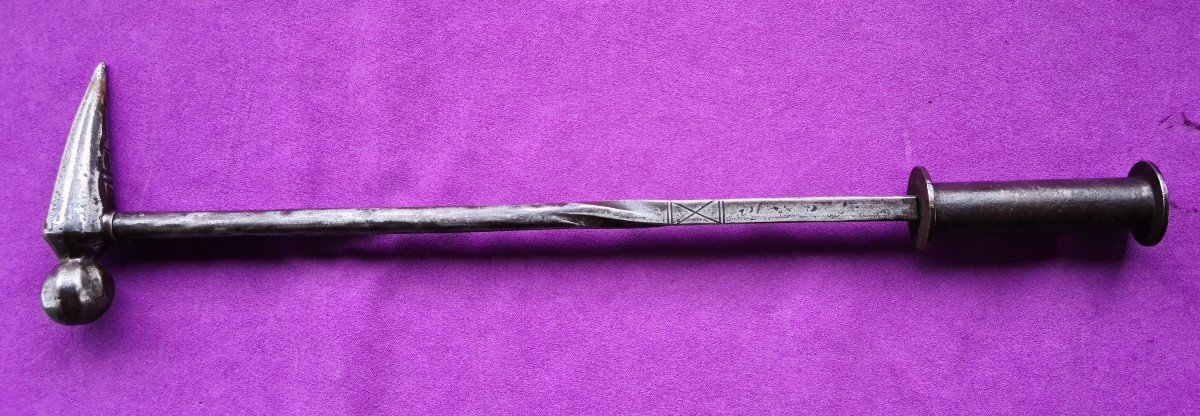
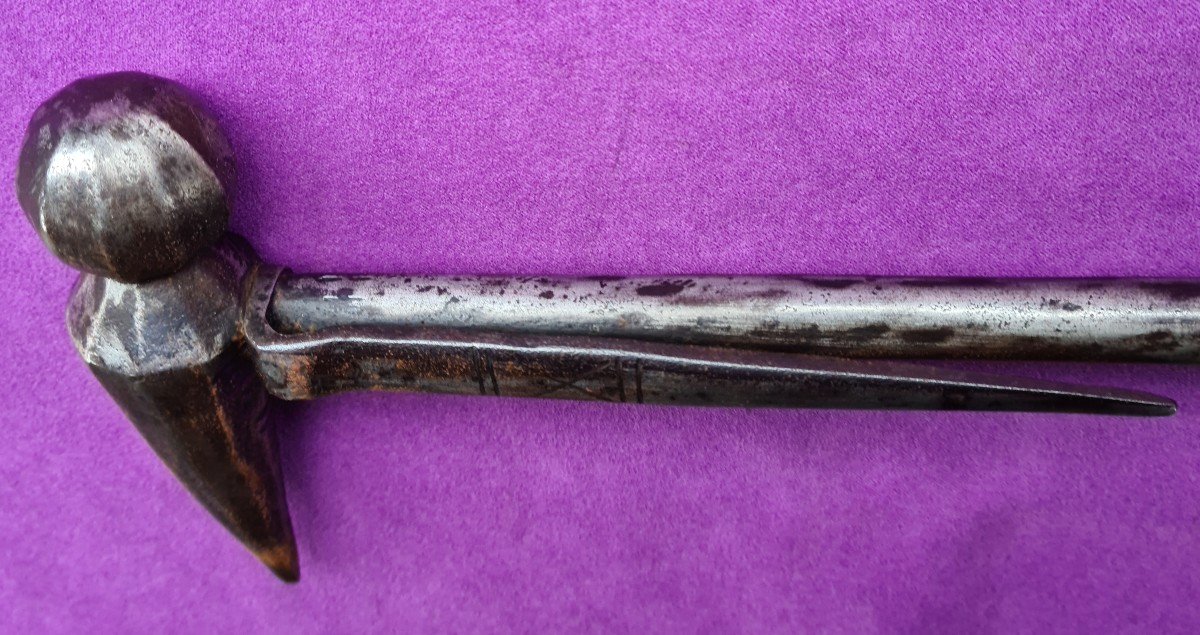
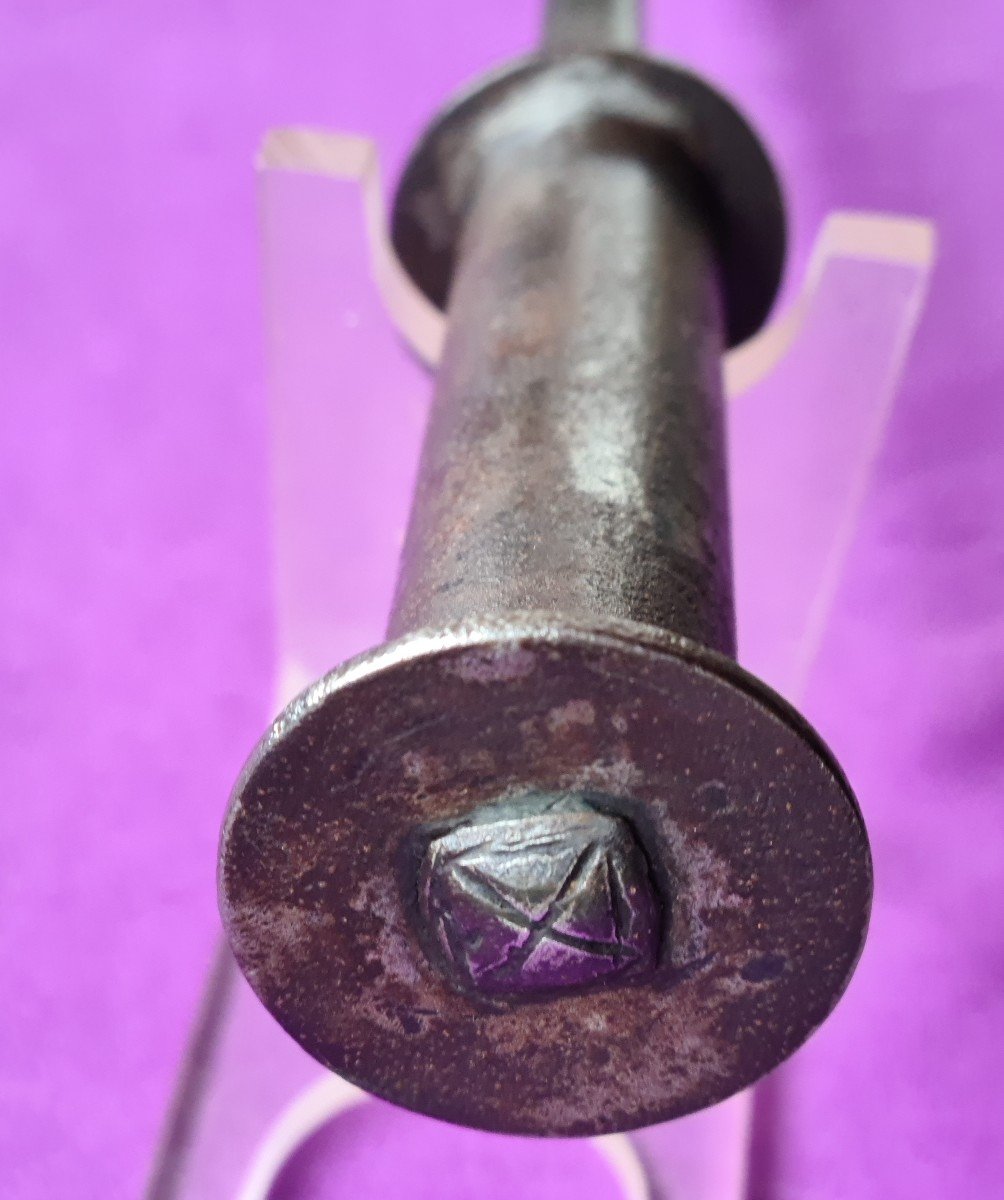
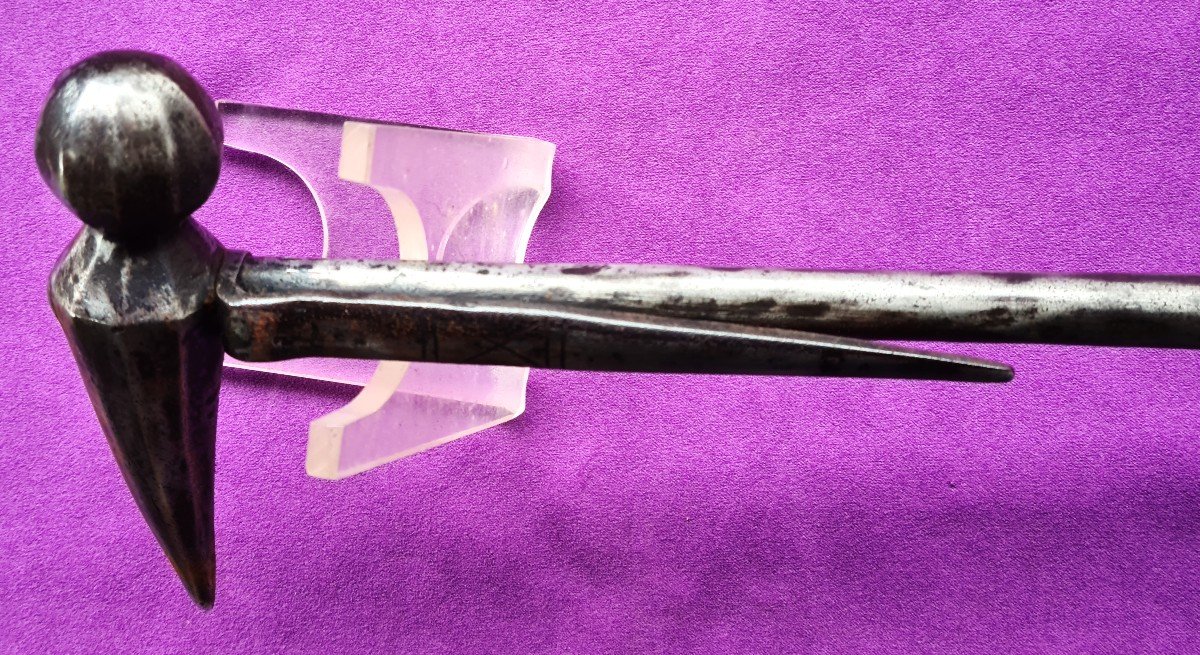

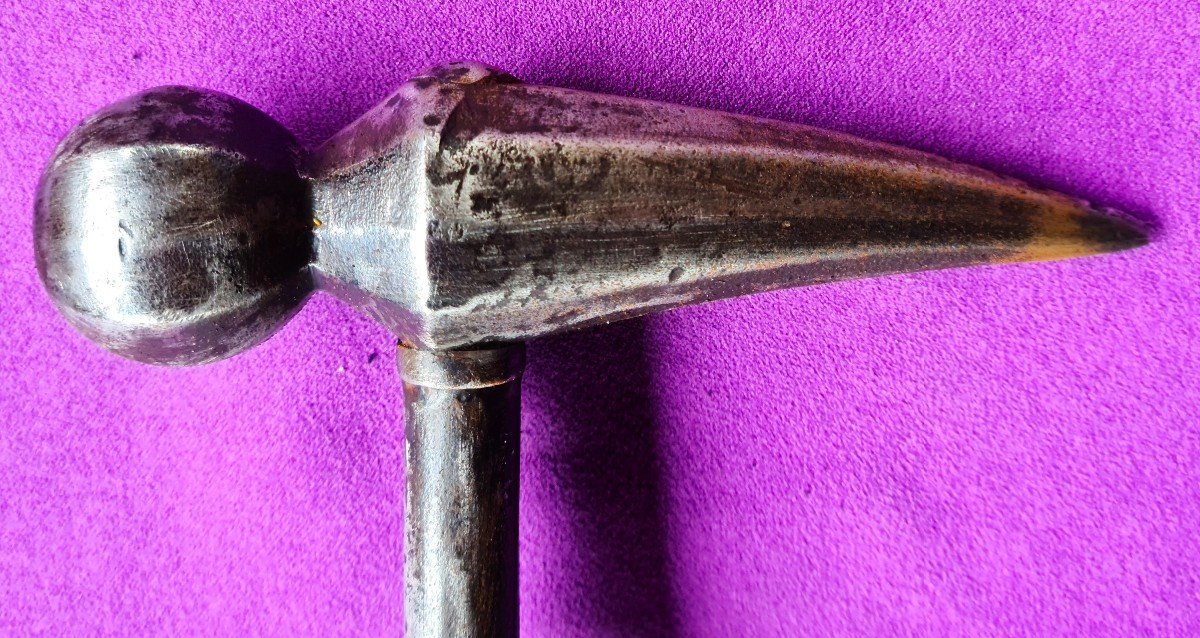

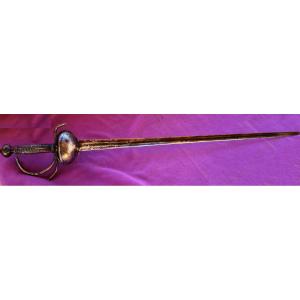
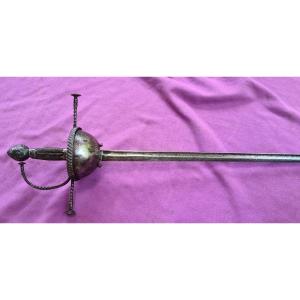

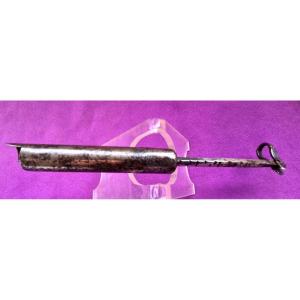




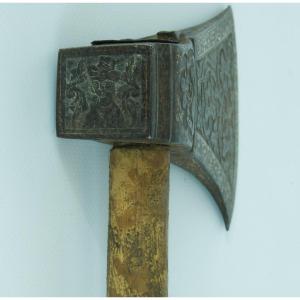





 Le Magazine de PROANTIC
Le Magazine de PROANTIC TRÉSORS Magazine
TRÉSORS Magazine Rivista Artiquariato
Rivista Artiquariato
